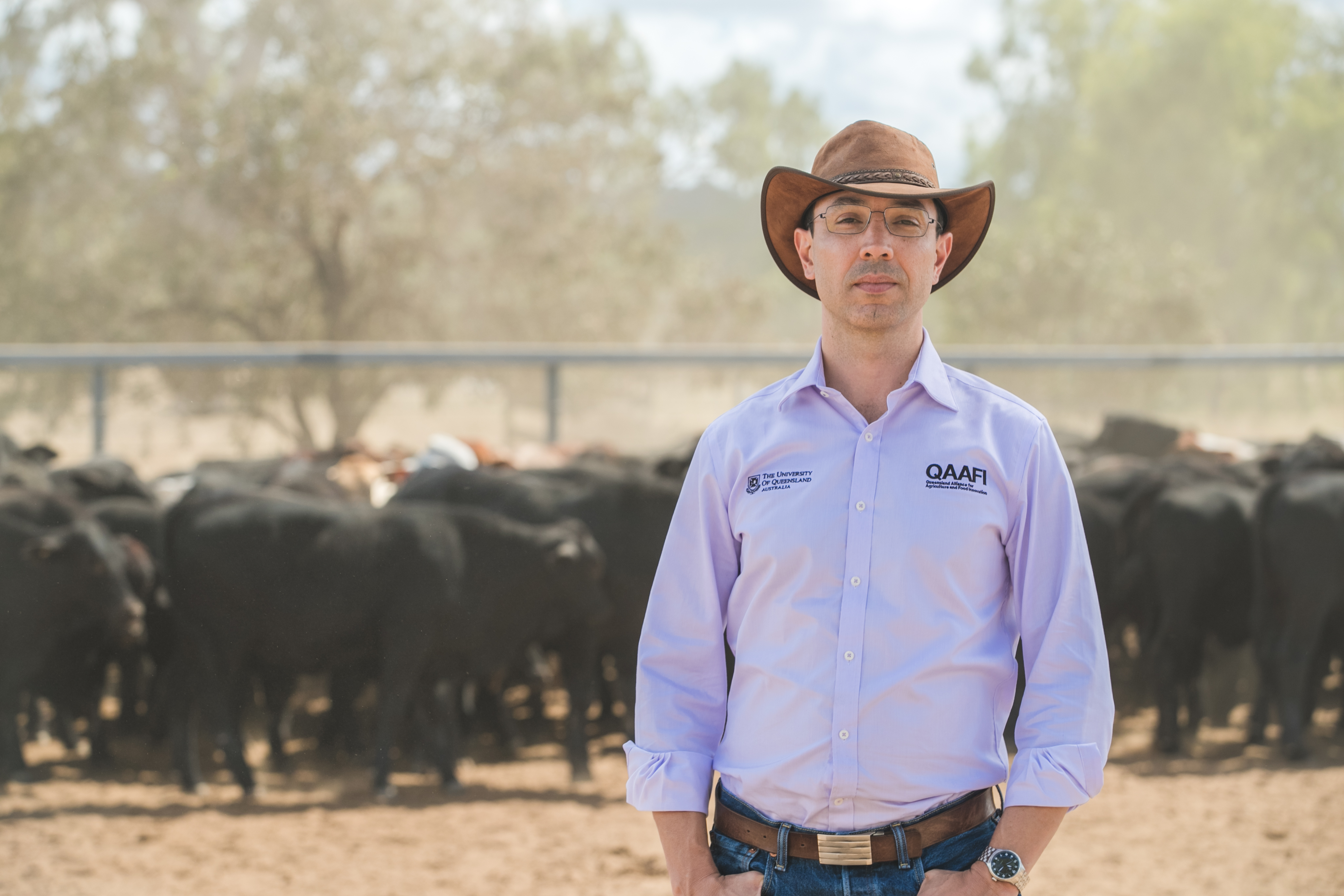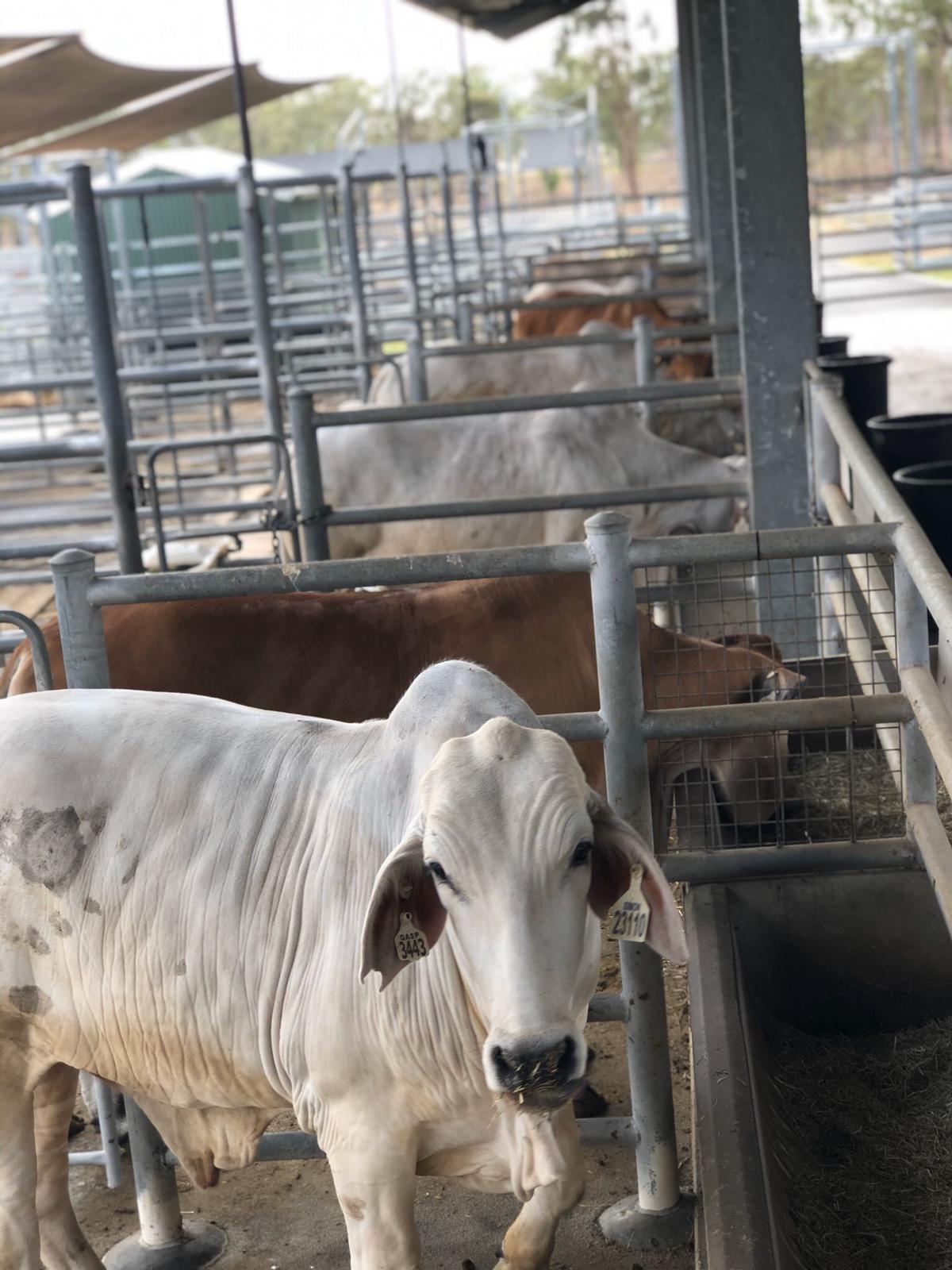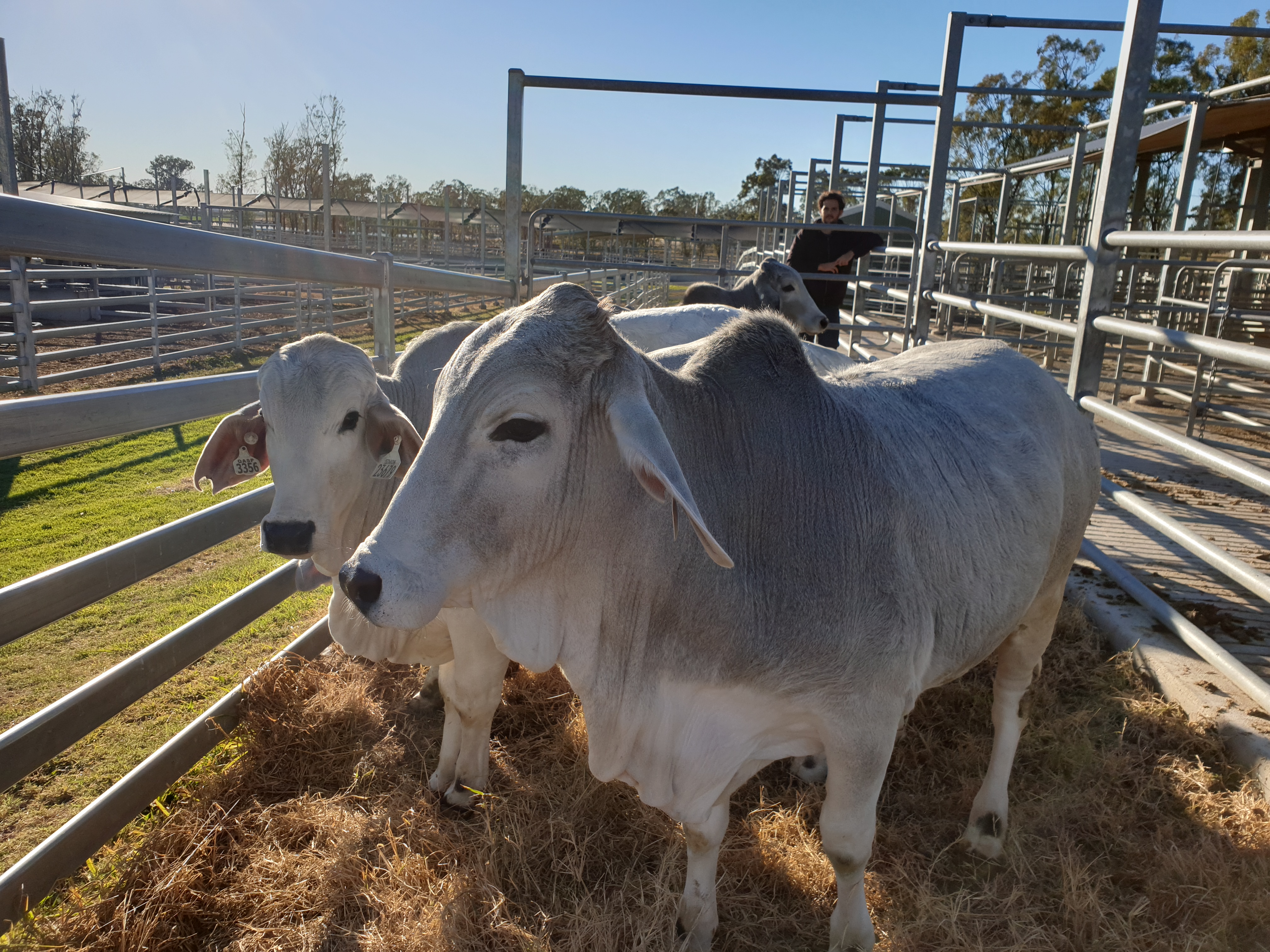Identifying traits in cattle that allow them to thrive in challenging environments is the aim of new research to assist Australia’s northern cattle producers.
Tail-hair samples routinely used for DNA testing in cattle are also providing valuable information about the ability of Brahman cattle to survive on the low-quality pastures typical in Australia’s northern regions.

Being able to identify this adaptability trait is expected to help northern producers identify bulls that will produce offspring better suited to the local environment.
UQ Livestock scientist, Associate Professor Luis Prada e Silva, is investigating the ability of animals to adapt to pasture-based diets, which are often low in protein, as part of efforts to improve animal performance.
His project is a collaboration with the Department of Agriculture and Fisheries, The University of Queensland and Meat and Livestock Australia Donor Company.
A key trait that Prof Prada e Silva is focusing on is the ability of cattle to recycle nitrogen when challenged by low-protein diets.
This ability is a unique evolutionary trait of ruminants such as cattle, and has implications for animal growth, fertility and calf survival.
Nitrogen is essential for the rumen microbes, which effectively produce additional protein for the animal. When cattle eat low-protein diets, nitrogen that would normally be lost in urine on higher quality diets is recycled back to the rumen to mitigate any shortfall.

Prof Prada e Silva says herds across northern Australia might graze pastures that are eight per cent protein in the growing season, dropping as low as three per cent for extended periods during other times of the year. By comparison, feedlot cattle diets are generally 13 per cent protein.
His research is comparing the performance of Brahman cattle, supplied from the Simon Cattle Company at May Downs, Central Queensland, on high and low-protein diets (13 per cent and 8.5 per cent, respectively), although he points out the ‘low’ is still quite high compared to common pasture conditions.
Having tested 60 animals so far, he says there has been no correlation in the performance of cattle on high and low-protein diets in terms of either growth or feed efficiency.
“We have effectively demonstrated that selecting genetics from high-performing, well-fed stud bulls will not translate to a similar growth performance for progeny feeding on low-protein feed.”
One of the key research findings has been the identification of nitrogen isotopes in the animals’ tail hair that indicates the ability of cattle on low-protein feeds to recycle nitrogen within their own bodies.
“We’ve used a forensic science approach to identify changes in the signature of the isotopes. Changes in the composition of the nitrogen isotopes have a strong correlation with feed efficiency and growth on low-protein diets, making it a useful marker to identify this nitrogen recycling ability.”

However, he says these changes only manifested when there was a protein shortfall in the diet, making it difficult to predict the performance of well-fed animals, should there be a change in their diet.
The ultimate goal is to develop a fast, crush-side test that producers can use to sort and select animals that will perform in tough conditions.
The project started in 2018 and will run until the end of 2021, with another 30 animals to be diet-tested before it finishes. The project is jointly supported by the Queensland Department of Agriculture and Fisheries, The University of Queensland and Meat and Livestock Australia Donor Company (MDC).
Prof Prada e Silva and his team are also investigating the mechanisms that trigger nitrogen recycling and its impact on rumen microbes, carcass composition, and potential genetic markers for this nitrogen recycling ability.
CONTACT: Associate Professor Luis Prada e Silva, Senior Research Fellow, Queensland Alliance for Agriculture and Food Innovation, The University of Queensland, M. 0421 833 376 T. +61 7 3346 2166 E. l.pradaesilva@uq.edu.au or Carolyn Martin QAAFI media E. carolyn.martin@uq.edu.au or M. 0439 399 886.



